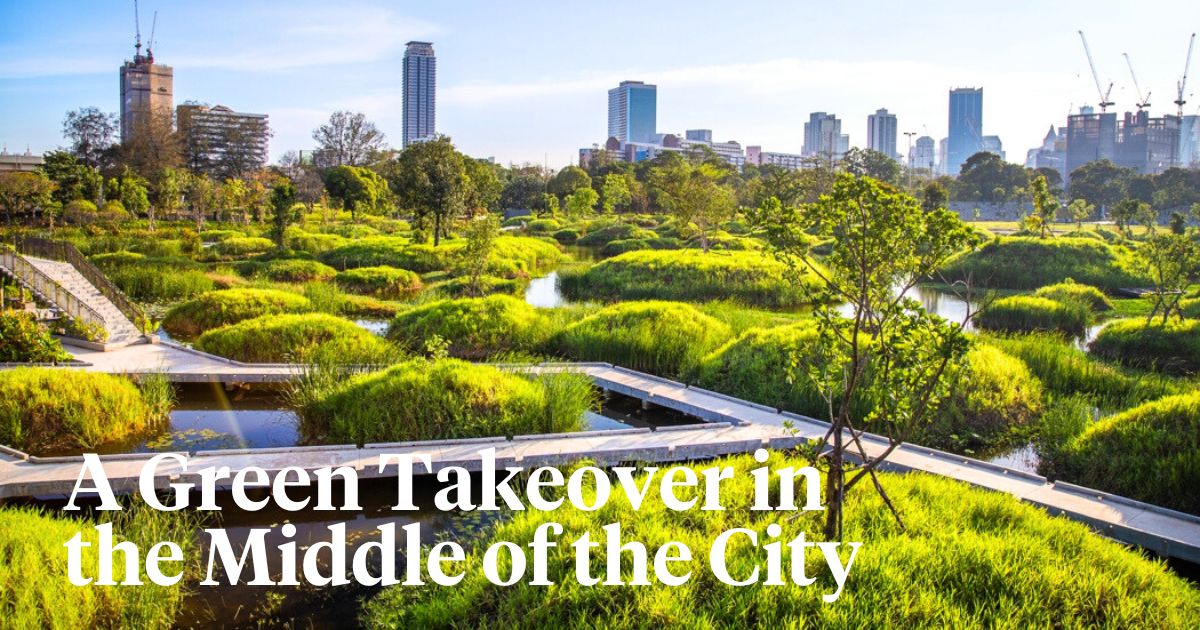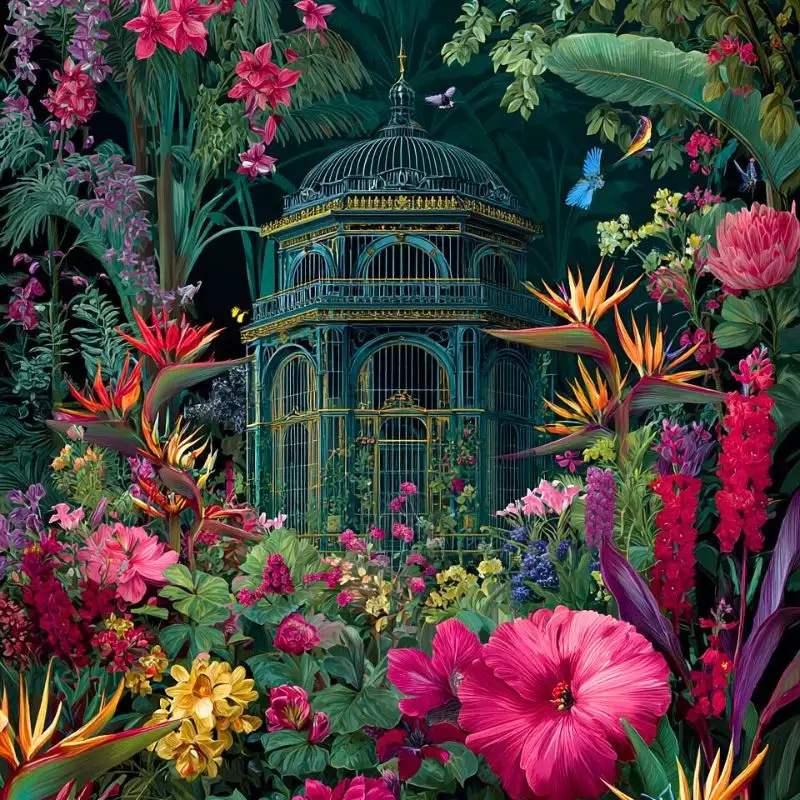Benjakitti Park, an urban oasis in Bangkok, grew out of a former tobacco factory. It covers 720,000 square meters and serves as an educational hub for ecology, hydrology, and the environment. This initiative captures 128,000 cu.m. of rainwater, producing 1,600 cu.m. of clean water per day. Addressing floods and droughts with natural solutions acts as a 'sponge', using bioremediation to purify. Here's what to know about this incredible project.
Benjakitti Park - A Hub of Trees, Oxygen, and Greenery for Bangkok
The Benjakitti Park fosters a wildlife habitat, housing 360 tree species, and transforming swampland into a rich ecosystem. It incorporates sustainable techniques, reusing materials, and repurposing factory buildings for museums and sports centers. Accessible to all, it’s a sanctuary within Bangkok, fostering a diverse, nature-centric experience – a biodiverse classroom for city dwellers.
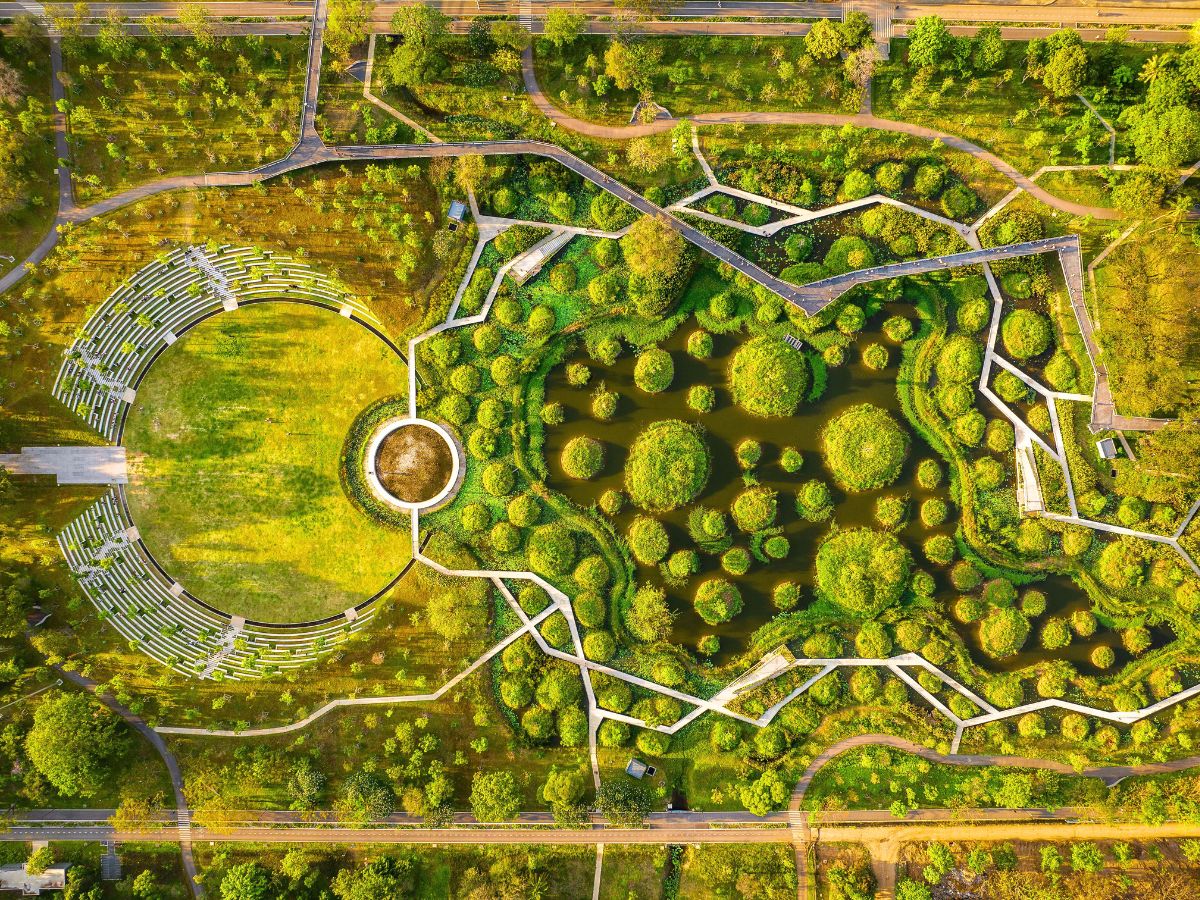
The team behind Arsomsilp Landscape Studio has transformed the former tobacco factory site into a low-maintenance regenerative system that intercepts and reduces the destructive force of stormwater, filters contaminated water, and provides much-needed wildlife habitat. Furthermore, the Benjakitti Forest Park is now the largest public recreational space for residents of downtown Bangkok and its surroundings, serving as a new cultural symbol for Thailand's capital city's world-renowned spirit.
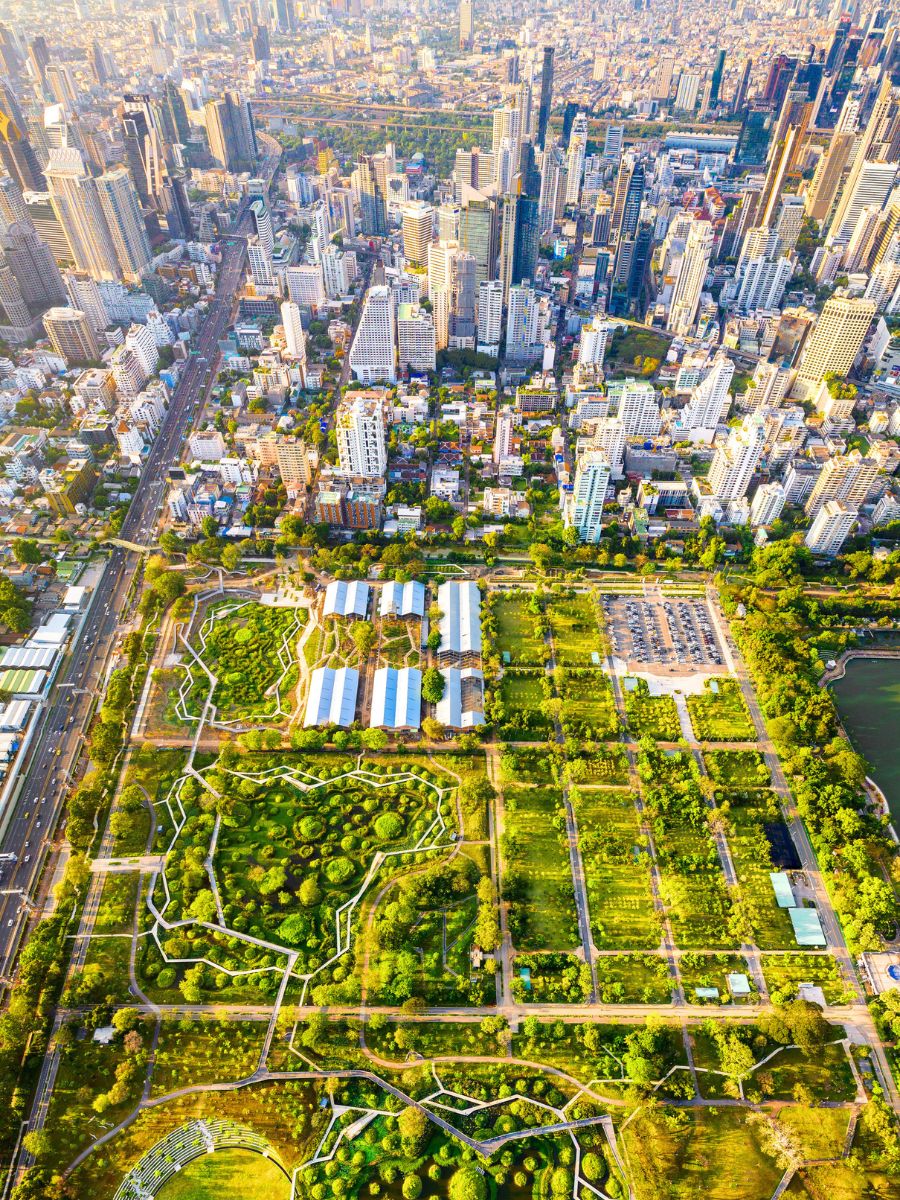
The project, completed at a low cost in just 18 months, provides a replicable modular approach to urban engineering capable of transforming lifeless, concrete-paved ground into a resilient living ecosystem that provides a full range of ecosystem services.
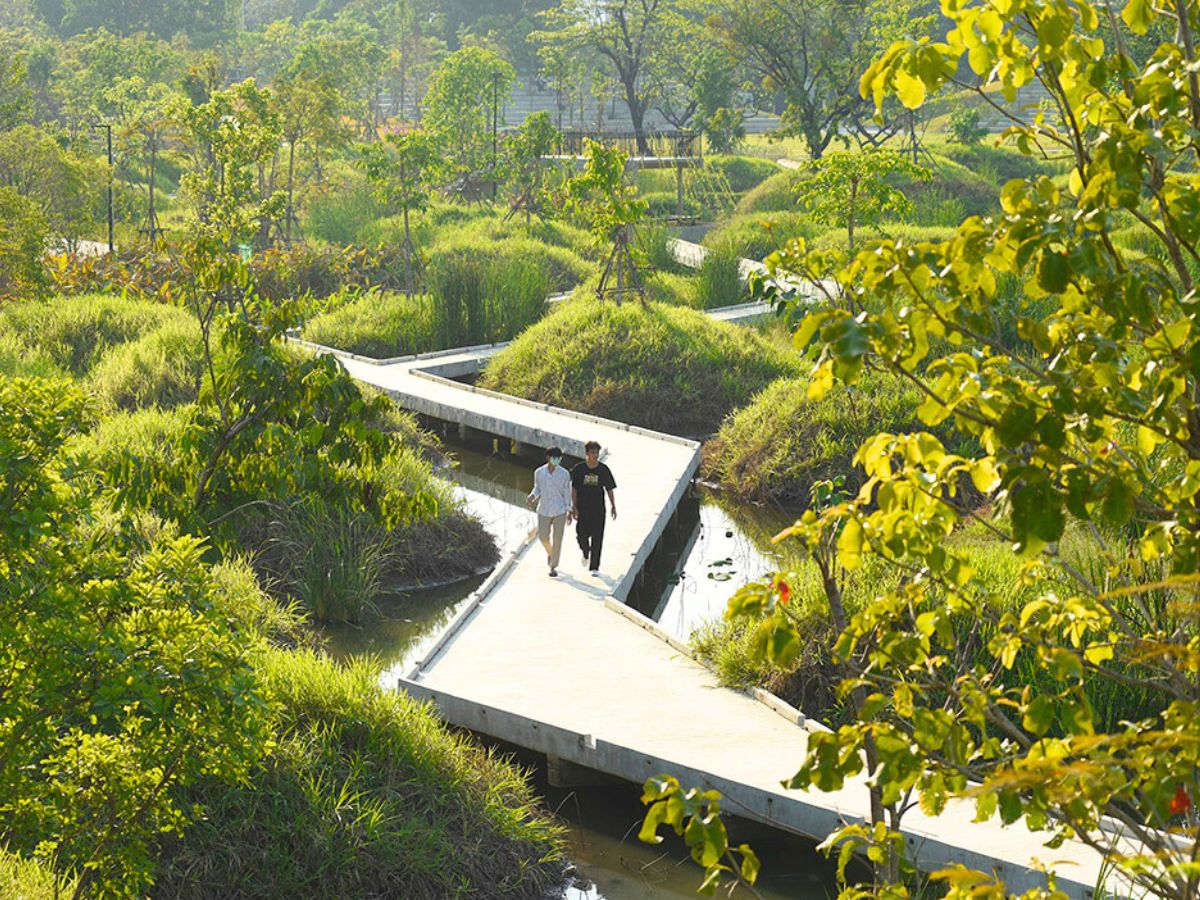
Extra Details About Bangkok's Greenest Space
Bangkok is a densely populated city. The region has a monsoon climate, with an average annual precipitation of approximately 1500 mm. The effects of global warming have increased the risk of flooding due to Bangkok's low elevation.
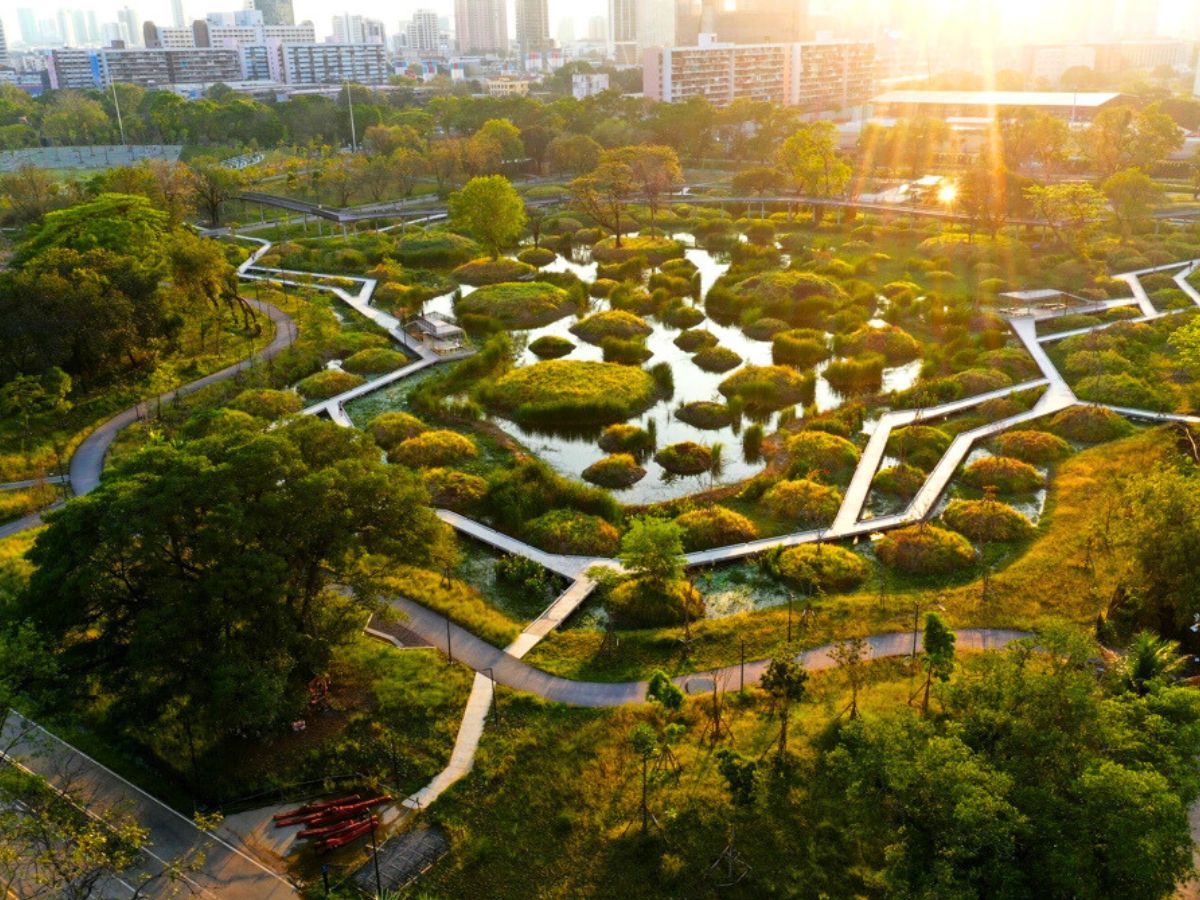
The formerly tobacco factory was densely occupied with single-story warehouses with several canopy trees scattered in between. The site is surrounded by Phaisingto Canal to the north, which was contaminated with urban runoff and sewage; Duang Phithak Urban Expressway to the west, which cut the site off from the adjacent community; an artificial lake to the east; and a hospital, hotel and the Queen Sirikit National Convention Center to the south.
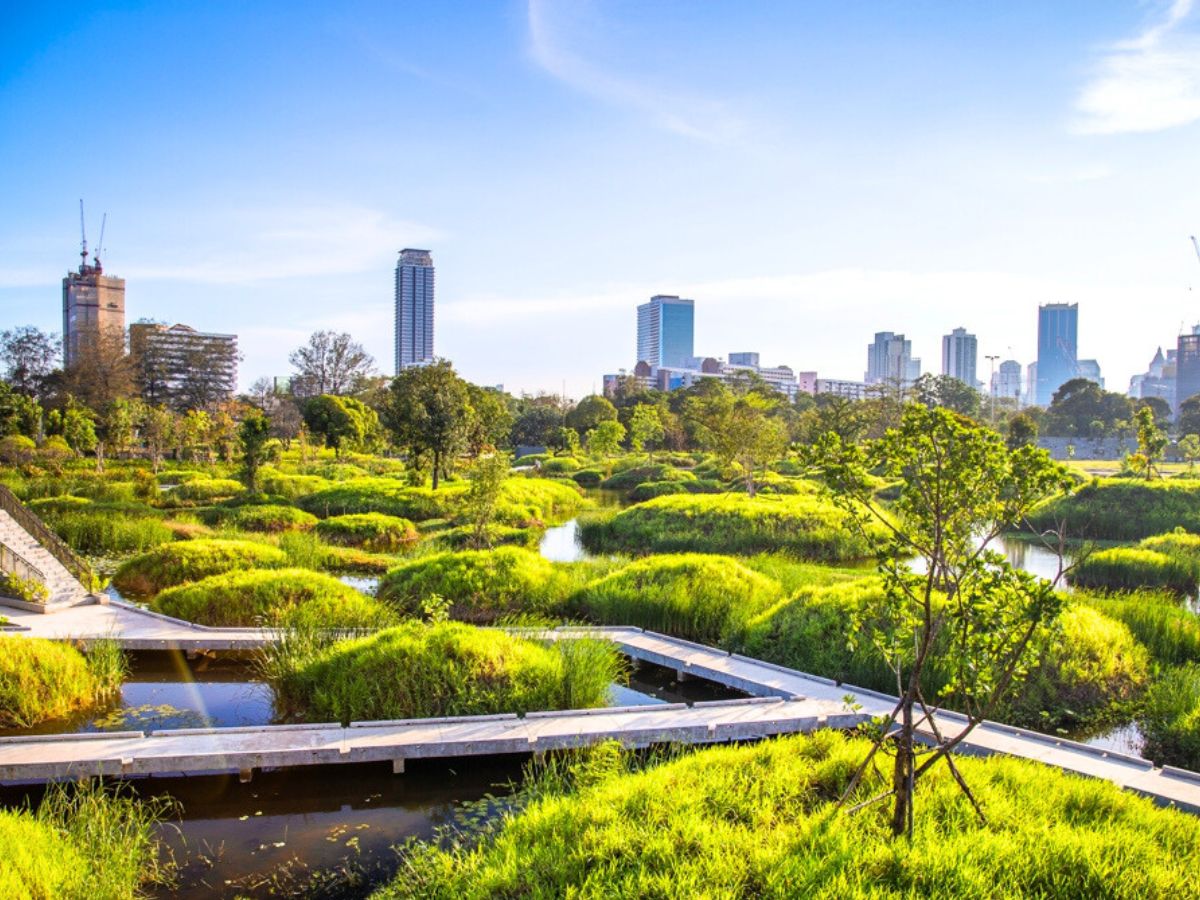
In addition to the challenges of the site itself, the budget for this project was limited, and the project was expected to be completed in just 18 months. An additional challenge was that the project was overseen by the army, which did not have extensive experience managing landscape projects. All in all, the team’s design was selected through an international competition and the results were absolutely amazing.
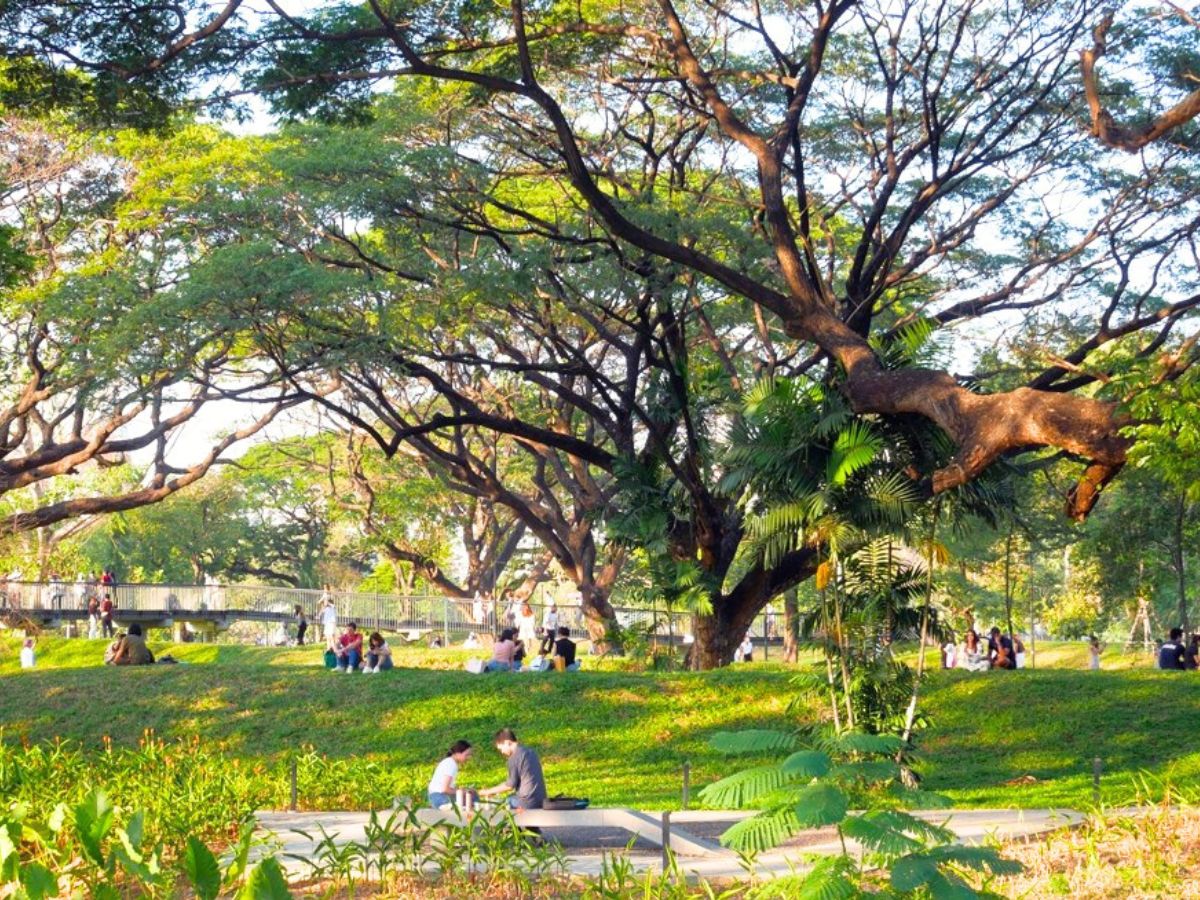
A Design With Objectives
To address the site's multiple challenges and its dense urban surroundings, the project was envisioned as a central park capable of providing holistic ecosystem services to the city, including stormwater regulation to adapt to the changing monsoon climate, as a demonstration of a nature-based solution for filtering polluted urban runoff and providing life support for native species, as well as providing badly needed public space for daily recreational activities.
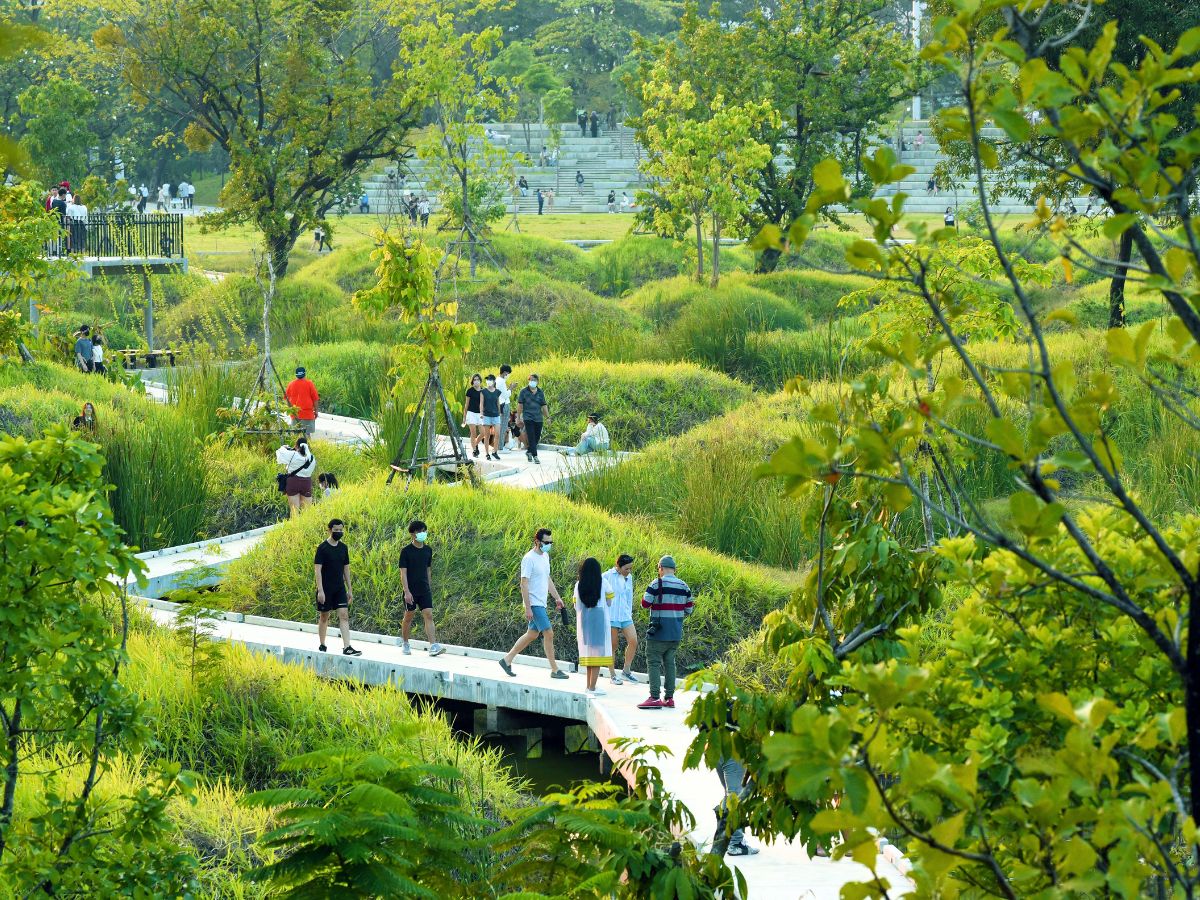
All existing trees on site were preserved and integrated into the park design. To keep the budget low, all existing main roads were to be preserved. Existing factory buildings were repurposed to house the sports center and museum, which are fully integrated into the landscape. The demolished concrete materials were recycled for the earthwork foundation and paving.
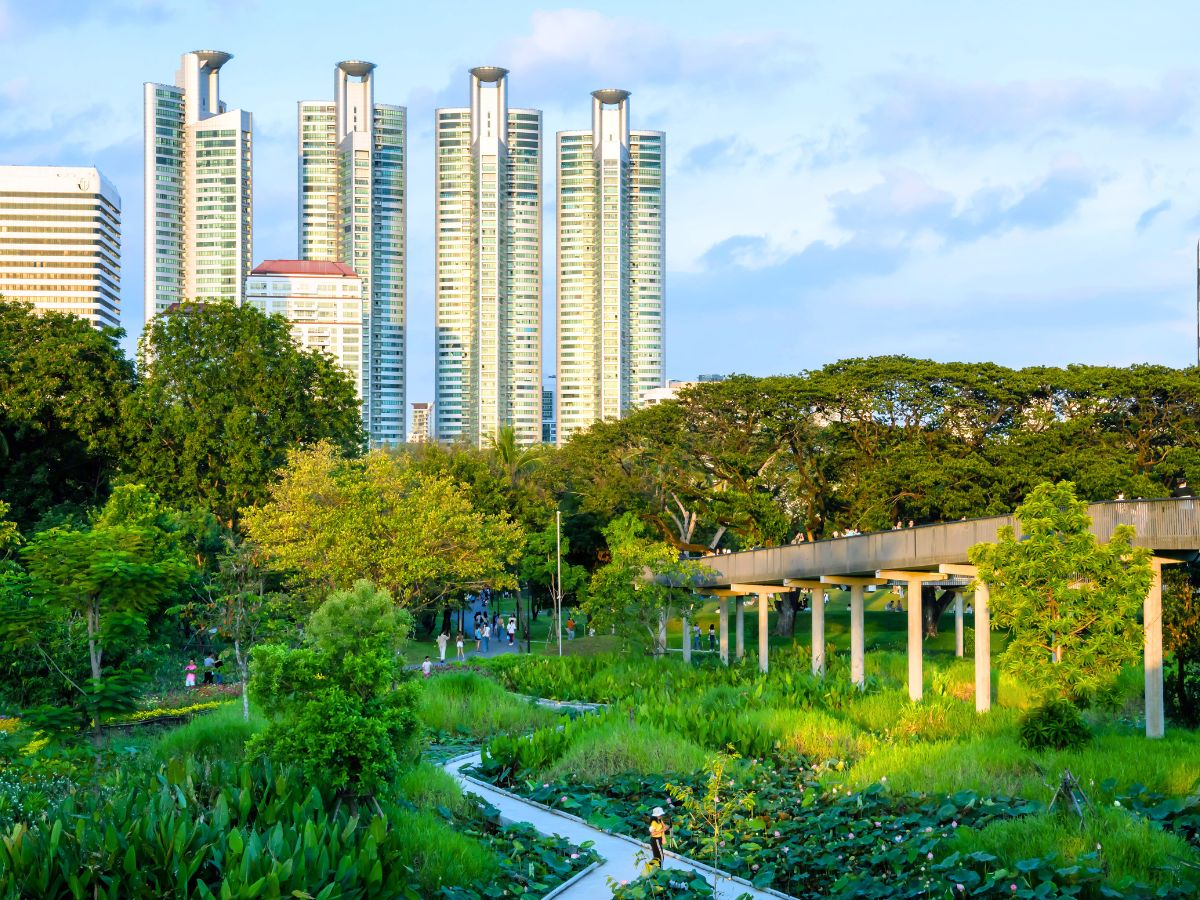
The modulated landform with diverse micro-environments was sown with seeds and planted with tree seedlings, creating a foundation for the subsequent evolution of a semi-natural plant community creating a new, highly dynamic, and diverse aesthetic that sharply contrasts with the surrounding urban landscape.
To know more details about this project visit Landscape's website.

